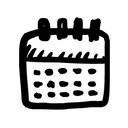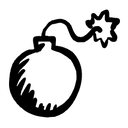Worth 15% of your course grade
 Important Dates
Important Dates
- Jul 7: Rough Drafts for Peer Review, due by 11:59 PM
- Jul 8: Peer Feedback, due by 11:59 PM
- Jul 11: Project 1 due by 11:59 PM
- Jul 13: Grace period ends at 11:59 PM
Goals
 build community by introducing yourself to the class and connecting with one another build community by introducing yourself to the class and connecting with one another |
 identify ethical/intercultural and global issues that you care about and will expand on during the term identify ethical/intercultural and global issues that you care about and will expand on during the term |
 think about audience and purpose as you create something you can use later in your career think about audience and purpose as you create something you can use later in your career |
 The Project Assignment
The Project Assignment
Imagine that you have taken a new position as an intern with a company or a leadership position with an organization. Write a biographical statement for the company or organization newsletter or the team section of the company or organization website. You may be able to use some of this assignment later in the term when you work on your Job Application Materials.
Step-by-Step Details
Step 1: Decide on a specific audience and purpose for your project.
You will do better on this project if you have specific readers in mind, so decide on a company or organization whose employees, members, or clients will read your bio.
You can choose a company you are doing an internship for, a company where you worked in the past, a club or Greek organization you belong to, or your department or college. There are lots of options.
Step 2: Set your goals for the project.
You have the opportunity to aim for the grade you want to earn in this class. The options below outline what you need to do for the grade you want to receive.
No one, in my experience, aims for a D, so I have not included any details for below-average work. If you really want a D, just put in minimal effort and do sloppy work.
 Complete the B-level project and then use unique strategies and details that are clever, original, creative, and/or imaginative. Your bio should include well-chosen graphics or visual elements that increase its effectiveness. It should have no errors in grammar, spelling, punctuation, mechanics, linking, and formatting. Complete the B-level project and then use unique strategies and details that are clever, original, creative, and/or imaginative. Your bio should include well-chosen graphics or visual elements that increase its effectiveness. It should have no errors in grammar, spelling, punctuation, mechanics, linking, and formatting. |
 Complete the C-level project and then use design elements (like headings, layout, etc.) to highlight key information and make the bio easy to read and visually appealing. Your bio should have no more than two or three minor errors in grammar, spelling, punctuation, mechanics, linking, and/or formatting. Complete the C-level project and then use design elements (like headings, layout, etc.) to highlight key information and make the bio easy to read and visually appealing. Your bio should have no more than two or three minor errors in grammar, spelling, punctuation, mechanics, linking, and/or formatting.
|
 Write a professional bio for a specific formal audience. Include biographical facts as well as discuss your interest in ethical and/or intercultural and global issues in your field or career. Your bio should be complete, well-written, and include no more than five grammar, spelling, punctuation, mechanics, linking, and/or formatting. Write a professional bio for a specific formal audience. Include biographical facts as well as discuss your interest in ethical and/or intercultural and global issues in your field or career. Your bio should be complete, well-written, and include no more than five grammar, spelling, punctuation, mechanics, linking, and/or formatting. |
 Warning! No grade is guaranteed.
Warning! No grade is guaranteed.
Make sure your work is error-free, fully-developed, and ready to share with the intended audiences. Any work that is incomplete or that contains multiple errors will not earn an A or an A-.
For instance, say the writer aimed for a B and used design elements to make the bio visually appealing, but the finished text was full of typos. It was obvious the writer didn’t proofread at all. The project earns a C rather than a B.
Step 3: Write your biography statement.
Write your biography statement in your word processor.
As you compose, focus on details. While your scenario is imaginary, the details in your biography should be current and accurate. Do not make up future information.
Use the examples linked on the course website in the post for the week of July 5 to guide your work. You will post your draft for peer review by 11:59 PM on July 7. Use the advice you receive from your readers to revise your bio before the due date. There are no rewrites or revisions after work is graded.
Step 4: Write your cover memo.
Write a cover memo that tells me whatever information I need to know to understand the work you did on your project. This memo should be the first page of your project. Your bio statement will be the second page. Both documents should be in one file.
Your memo should use standard memo format, with the headings of To:, From:, Subject:, and Date. Include this information:
- Tell me your audience and purpose (e.g., This is for a formal bio for an architectural firm’s website.).
- Tell me what grade you aimed for (e.g., I aimed for a B+ by including headings and …).
- Tell me anything else you want me to know before I grade your project.
Be sure to explain the background on your piece fully. This cover memo is where you tell me about the work you put into the project and provide some self-evaluation of your work. The cover memo is the first thing I will read, so it is your opportunity to make sure that I have all the information that I need to understand your bio statement.
Step 5: Submit your project in Canvas.
When you are finished with your cover memo and bio statement, you will turn in your work in Canvas, following the submission instructions.
Last updated on 7th July, 2016, 4:48 AM
 Work Required
Work Required









